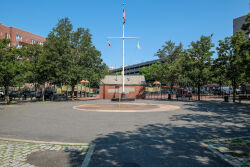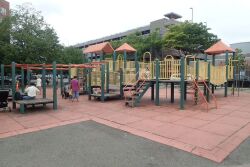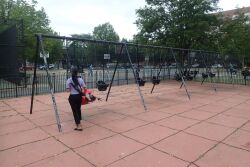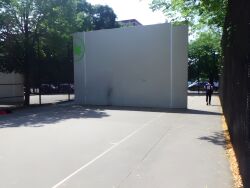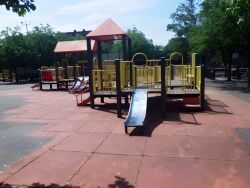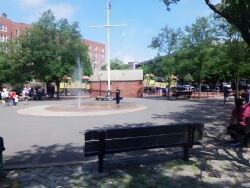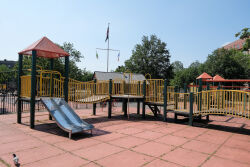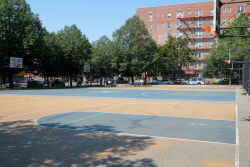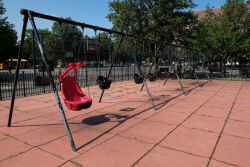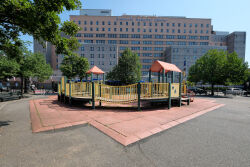Frank D. O'Connor Playground
Frank D. O’Connor Playground
What was here before?
This land was formerly part of the settlement of Middleburg, established in 1652 by English Puritans. Shortly thereafter the village was renamed Newtown. When Dutch Governor Peter Stuyvesant threatened their patent, the colonists approached the Algonquian-speaking Lenape, who agreed to share the surrounding territory. The settlers ultimately took ownership of the property, and the Lenape were displaced. Over the next two centuries, farmland gave way to residential and commercial development.
By the turn of the 20th century, this parcel was part of a larger landholding owned by Stuard Hirschman, a real estate investor and philanthropist. The tract remained undeveloped except for dirt paths for several decades.
How did this site become a playground?
In 1935 the Board of Transportation, which had acquired the property, permitted NYC Parks to use two parcels on the east and west sides of 78th Street for recreational purposes. The property was developed by the Works Progress Administration (WPA) in 1937 into a neighborhood playground and sitting area across from each other.
Renovations in the 1950s removed outdated equipment and added game tables, a sandpit, slides, and basketball courts. It was at this time that City Hospital (now NYC Health + Hospitals/Elmhurst) moved from Roosevelt Island and opened across the street in 1957.
The park was named Frank D. O’Connor Playground in 1993, after remaining nameless for several decades. The sitting area across the street became known as O’Connor’s Tail. The playground was upgraded in 1996 with new play equipment and horticulture. Construction also extended the park into 79th Street and the playground was officially mapped as parkland.
Who is this playground named for?
Frank D. O’Connor (1909-1992) led a distinguished career in public service over four decades. Born in Manhattan to Irish immigrant parents and raised in Elmhurst, Queens, O’Connor graduated from Newtown High School and Niagara University.
O’Connor earned his Bachelor of Laws from Brooklyn Law School in 1934. During World War II, he served as a legal officer in Alaska with the Coast Guard. In 1949 he was elected to the New York State Senate and was reelected in 1954. As a defense lawyer, he gained national attention in 1953, when he defended Christopher Emanuel Balestrero, a musician who had been wrongfully accused of two holdups in Queens. Three years later, Alfred Hitchcock directed “The Wrong Man,” a movie based on the case.
From 1955 to 1965, O’Connor served as the Queens District Attorney, after which he was President of the City Council for three years. As Council President, he promoted the distribution of public housing throughout the city and the creation of a civilian complaint review board for the Police Department, a position that influenced his unsuccessful run for Governor against Nelson Rockefeller in 1966. O’Connor was elected to the State Supreme Court in 1968. In 1976 Governor Hugh L. Carey appointed him to the Appellate Division. Six years after retiring, Judge O’Connor died in Flushing, Queens in 1992.
Check out your park's Vital Signs
Clean & Safe
Green & Resilient
Empowered & Engaged Users
Share your feedback or learn more about how this park is part of a
Vital Park System

